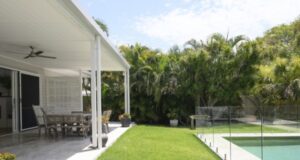
See how lagging (insulation) and the distance that hot water has to travel through your pipes can affect energy efficiency in your hot water system.

In addition to choosing an energy efficient hot water heater, you can save energy by reducing the loss of heat through your home’s water network. By taking measures in careful placement of your hot water system, insulating the pipes and installing water saving devices, you can save money and reduce greenhouse gas emissions, as well as cutting your plumbing installation costs.
Effective placement
Having the hot water system placed as close as possible to the main outlets reduces the distance that the hot water has to travel. This is the first factor to consider, especially in a new home. Decide where your main water outlets are going to be and if possible, group up outlets like the bathroom, laundry and kitchen as closely as your house design will allow. If your hot water taps or bathrooms are too far from your hot water system you may need to consider an extra continuous flow unit or a hot water recirculation system to compensate.
A shorter distance means less piping, which also means lower plumbing and material costs too.
Piping insulation (also called lagging)
Insulating your pipes stops most of the heat from leaking out as the water travels from the hot water system to your water outlet.

Various types of lagging are available in different materials for different diameters of piping, so get yours measured before you make a purchase. Lagging will also have different insulation ratings, so make sure to get as thick a material as your pipes and budget will allow. It is generally not that difficult to install lagging on your own piping, though plumbers can easily provide some assistance if you need it.
Lagging is particularly important to have on the two metres or so of pipes leading out of the hot water system, and any other piping exposed to the outdoors. It is important though with gas systems to stop insulating about 30cm away from the flue, as the pipes leading up to it can get very hot and melt the lagging.
Water saving devices
There are also a number of devices you can install to improve the efficiency of your plumbing, and to cut down on how much water is wasted.
Temperature controllers regulate the temperature of your outlets, meaning that you won’t be wasting any water trying to balance the hot and cold to get to your desired water warmth.
Cold water diverters can be installed in existing homes to save water. Instead of letting the cold water run through the pipes until the desired temperature is reached, cold water diverters push the water back until a particular temperature is reached.
Recirculation systems work like cold water diverters, but they use a recirculation pump to push the water along a dedicated pipe until water of the right heat reaches the tap. This means the water is the right temperature whenever you want to use the tap. The recirculation pump will consume a little bit of electricity though, which also needs to be considered. These systems are better fitted in new homes so the plumbing can be configured for the maximum benefit.





